Entries Tagged 'planning' ↓
November 2nd, 2012 — design, kitchen, planning, tip of the day
The kitchen has long been seen as the heart of a home, functioning not only as a place to eat, but also somewhere to socialise & entertain. With plenty of more modern homes being built around open plan living, keeping the space safe & in lovely working order could be even more important, go to this web site to read more.
Irrespective of how your home is set up, & how safety conscious you think you are, it’s still a lovely suggestion to keep in mind that the kitchen can be the most hazardous room in the house. It is filled with a considerable number of potential hazards and dirt. It can also be a place where a considerable amount of mold can build up, so it is important to contact a mold removal company if this is a problem in your kitchen. In the UK, 2.7 million people were treated in hospital for accidents in the house last year. So it makes sense to keep your kitchen as safe as feasible to make sure you can avoid the most obvious pitfalls, Equipment Hire.
Safety conscious? Get home insurance and make sure your kitchen is covered too! Continue reading →
September 20th, 2012 — cabinets, design, kitchen, planning
The open kitchen has been a modern design staple for some time now. The pros of such an open and airy space, are many. They allow people to freely flow in and out of the adjoining rooms, and are usually closely located near a dining room or breakfast nook, which encourages togetherness, closeness and an all-around more social, and more interactive environment using the best tool box you can read more here at the link.

Continue reading →
April 9th, 2012 — cabinets, compact, kitchen, layout, planning
In the late 1920s and early 1930s, furniture manufacturers found a ready market for kitchen cabinets. This
1 Stop Cabinets blog tells you more about how you can repair dings or small scratches on kitchen cabinets.
These were designed to hold almost everything the cook needed, complete with flour bins, egg racks and extending tables. They also often had vented compartments as refrigerators were still uncommon. Visit
custom timber furniture Melbourne to choose your favorite furniture.
From 1932–34 in the USA, General Electric and Westinghouse opened cooking institutions. Engineers, chemists, architects,  nutritionists and professional cooks studied all aspects of the kitchen. The work process was scientifically investigated, and the way was opened for the modern streamlined kitchen. Today, you can find beautiful, innovative kitchens all over the world. The
architects Melbourne can design your dream kitchen.
 Continue reading →
Continue reading →
January 6th, 2012 — design, hoods, kitchen, layout, planning
The Victorians still thought it desirable to keep the kitchen, with its attendant smells, well away from the gentry end of the house. In grand homes which may have utilized services like https://planetroof.com, kitchens were positioned in the centre of the servants’ wing, surrounded by the smaller rooms of the scullery, larder and pantry with separate stores for game, fish, ice and coal. These would be adjacent to the servants’ hall with separate rooms for the cook, butler and housekeeper
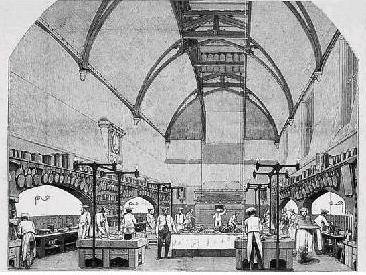
The importance of the house could be judged by the number of chefs presiding over numerous kitchen maids. Kitchens were full of cooking devices such as roasting ranges, stewing and boiling stoves, turnspits and hot cupboards. However, there were no mechanised devices for washing, ventilation or refrigeration. Water was pumped by hand into scullery sinks and food was kept cool in an ice box with ice brought in from an ice house outside. Most food was still kept in north facing larders with natural ventilation.
The big change in kitchen design came about due to the social implications of the industrial revolution and the development of mechanisation. Continue reading →
December 19th, 2011 — design, planning
Designing kitchens necessitates the integration of functional requirements, together with spaces which are pleasant to work in. Before analysing these needs it is worth looking back in time to see the antecedents of the modern kitchen. This will help to articulate and clarify the different activities needed to prepare complex meals and to realise how radically modern technology has reduced both the space and manpower needed to achieve this.
Early kitchens
The earliest kitchens, all over the world, are simply open fires, most often out of doors which is still so today in countries with a climate hot enough all the year round to make this possible.
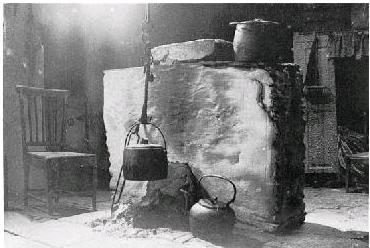
In Britain, little is known about kitchens until Norman times. After the Romans left Britain in AD 407, the culinary arts were largely forgotten. Food was often cooked outdoors on caul- drons or spits. This was to avoid the risk of fire and to keep smells out of the houses.
Continue reading →
January 18th, 2011 — accessories, budget, cabinets, faucets, kitchen, lighting, planning, remodeling
As house values are down across the board and loans / mortgages are harder to get, homeowners are finding few easy-money options for grand remodels. But hey, you probably should not do that anyway! Instead, why not go after projects that cost less on websites like https://atlantadrywallexperts.com, or even garner practical savings and keep their value much better when it comes time to sell.
This is very true for kitchens: usually one of the (if not THE) most expensive room in your home, a remodel can even cost anything upwards of $50.000 – which can be as much as 10% of the value of your home. Instead of spending a ton of money, let’s see a few options on modest, practical, recession-proof home improvement projects that build a home’s long-term value while conserving energy or just allow you to rest and enjoy your kitchen. Getting kitchen remodeling services like Chicago kitchen remodeling can help you plan and design your new kitchen better. And when your dream is having a bigger kitchen then building contractors dublin can help you with that. According to an official statement from Robinson Restoration, when remodeling a kitchen, you need to make sure there will be no water leaks and check the pipe so that there will be no moisture that will form mold.
January 11th, 2011 — cabinets, color, design, kitchen, kitchen island, lighting, planning
Are you considering kitchen remodeling or building a new one? If so, it makes sense to keep up with the latest trends, if for nothing else, to check what you’re likely to find in the stores this year. Before you start any renovation project, it’d be wise to get a roll off dumpster rental for the construction cleanup later on.
Here is a list of kitchen trends for 2011
1 Curved shapes become the ‘new minimal’
Kitchen designers starting to introduce curved shapes to the kitchen, just like other parts of the house. Gone are the days of sharp and straight and blocks look, as it’s now being replaced by soft appearance. The easiest way to add curved shapes and bump up your kitchen with a contemporary look is through the introduction of rounded sinks, maybe bowed cabinet, curved faucets. Descoperi?i bateria de buc?t?rie perfect? pentru casa dvs. cu Ghidul comprehensiv pentru baterii de buc?t?rie AquaRoo. If you can afford a bit more, think about adding a curved kitchen island (be careful though, it better harmonizes with your kitchen still). Continue reading →
October 10th, 2010 — kitchen, lighting, planning
Did you ever wonder how some kitchens look like they belong on the pages of a glossy mag or in one of those lifestyle TV shows? Most of the times the simple reason is that they use lighting effectively. And that’s about it. Kitchen lighting design is key.
Well planned lighting can turn even the most drab space into a chic interior, and similarly, poor lighting can completely ruin even the most stylish decor. So I feel it’s quite astonishing how many kitchens rely totally on ambient (mostly overhead) lighting. Sure, you can go to the other extreme and illuminate your kitchen entirely with decorative lighting – as pretty as using candles – cosy if somewhat dim. Plus look out for your fingers when trying to chop something.
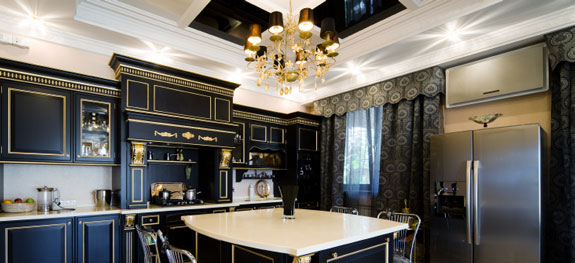
An important feature of all good kitchen lighting schemes is the use of numerous light sources. Kitchens are fundamentally work areas and require task lighting which typically needs to be placed between you and the items you are working with. If the main lighting in the room is located in the middle of the ceiling then you will find yourself working in your own shadow. To optimize functionality and create an inviting atmosphere, it’s crucial to strategically address lighting placement for a well-lit and efficient kitchen environment.
Continue reading →
October 12th, 2007 — design, floor, hardwood, kitchen, planning, remodeling
Looking into a new hardwood floor installation in your kitchen (or any room, for that matter)? Here are a few lessons I’ve learnt – probably the hard way.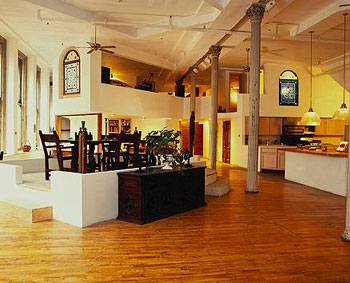
Measure twice, cut once
Once my engineering teacher and numerous craftsmen told me this and its oh-so-true. Not just measure what you need, also what you already have.
Here’s my story: my open kitchen – living room had some stone-tile flooring and radiant heating below it. So far so good. Turned out, the stone needed breaking up as it was installed very-very badly – about seven years ago. I looked up at http://epoxyinstallers.ca/ontario/toronto/ and after a lot of research figured I had a choice: either I break it up or it will come up all by itself soon. Not liking surprise-self-destructing floors, I’ve chosen the chisel. Worked like a charm. After the initial success, I’ve decided to install wooden flooring I got from a flooring company – it’s so much warmer, and so on. Checked out several companies, visited showrooms, chosen a beautiful floor. Got the wood, the contractor, everything went fine. “We need to level the floor, there’s some left of the former tiles’ cement. “Go on, find out what’s best, I’m not an expert in this” I told. Big mistake. To get epoxy paint see more at Miracote website.
Floor leveled off, floor being installed. All fine up until the first door: it won’t open. Turned out, the tiles were about 5mm (0.2 in) thick while the wood was about 15mm (0.6 in). The material they’ve used for leveling the floor took up 0.1 additional inches. “Ok, so chop off half an inch from your doors” the Kitchen remodeling Houston contractor said. (and raise the sill, move the hinges, whatever.)
Who-is-who in floor-land
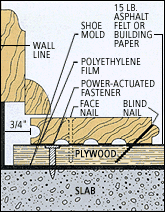 Before I go further, let’s see what I’ve learnt a hardwood floor is made of:
Before I go further, let’s see what I’ve learnt a hardwood floor is made of:- Planks: yep, everyone recognizes this: the actual floor. Can be solid wood, engineered wood, laminate, whatever.
- Subfloor: the material the installer puts below the planks. Can be building paper, another layer of wood – usually plywood – the glue from woodworkingquestions.com that keeps wood there or just concrete.
- Base Molding: from 3/8″ to 5/8″thick, from 1 1/2″ to 4″+ high; protects the wall and frames the wood floor.
- Shoe Molding: from 1/2″ to 1″ high. Used as “shoe” in some areas to cover the expansion space of the floor. It needs to be flexible enough to conform to irregular surfaces as well.
(I know it’s very basic, you can find everything you need to be up-to-date on wood flooring on the website of NOFMA – The Wood Flooring Manufacturers Association.
Know your base molding from the shoe molding
Or rather not, if you don’t really want to be involved. After the floor’s been laid, the finishing part – I thought – was the molding. I’ve chosen a molding about 4,5 inches high. “Oh, that’s a carpenter’s work, we do only shoe moldings” – says the contractor. They do only shoe molding, as they don’t have the machinery to cut higher molds. And on it goes.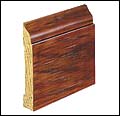
Lesson learnt: it’s best to agree on (and write it down!) everything throughout before anyone lays a plank. If you want to learn more about wooden floors, you will like to hire contractors from the North Carolina’s #1 flooring company which is is Raleigh Flooring. We’ve been using them for several years now and love the level of service they provide which allows you to learn a lot from them.
Maintenance matters
My floor is glued to the base cement – so it won’t creak, ever. Now that sounds good, doesn’t it? Sure it does, until one of the planks need to be changed – because of damage, warpage, a new wall or something else. If you want a flooring material that requires less maintenance, you should consider laminate flooring.
Also, the supplier gives warranty for properly laid floors – mine is, but if the guys who did it tell me they cannot change a plank, how does it exactly work? So please – please, look into these tiny details – an extra hour or two can save you days if not weeks later.
Want to know more? There’s a book for that! 🙂
August 29th, 2007 — design, kitchen, lighting, planning
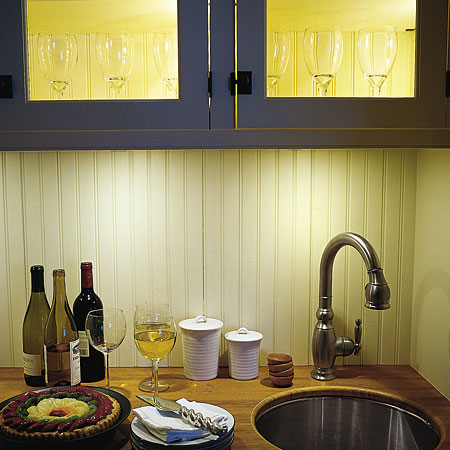 Lighting is usually the last thing you consider and the first thing you cut from the budget. But to look its best and function well, your kitchen must be properly lit and that involves more than just throwing a few stylish fixtures on the wall. A good kitchen remodeling plan blends lighting into the architectural and decorative details of the kitchen
Lighting is usually the last thing you consider and the first thing you cut from the budget. But to look its best and function well, your kitchen must be properly lit and that involves more than just throwing a few stylish fixtures on the wall. A good kitchen remodeling plan blends lighting into the architectural and decorative details of the kitchen
Continue reading →






 Before I go further, let’s see what I’ve learnt a hardwood floor is made of:
Before I go further, let’s see what I’ve learnt a hardwood floor is made of:

 Lighting is usually the last thing you consider and the first thing you cut from the budget. But to look its best and function well, your kitchen must be properly lit and that involves more than just throwing a few stylish fixtures on the wall. A good
Lighting is usually the last thing you consider and the first thing you cut from the budget. But to look its best and function well, your kitchen must be properly lit and that involves more than just throwing a few stylish fixtures on the wall. A good 

